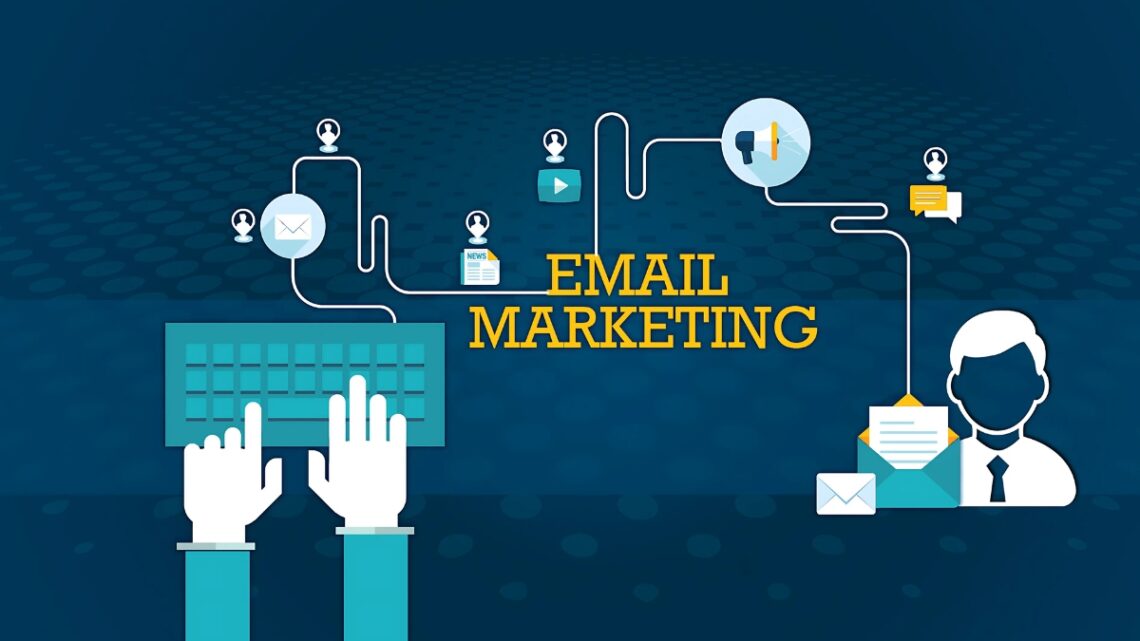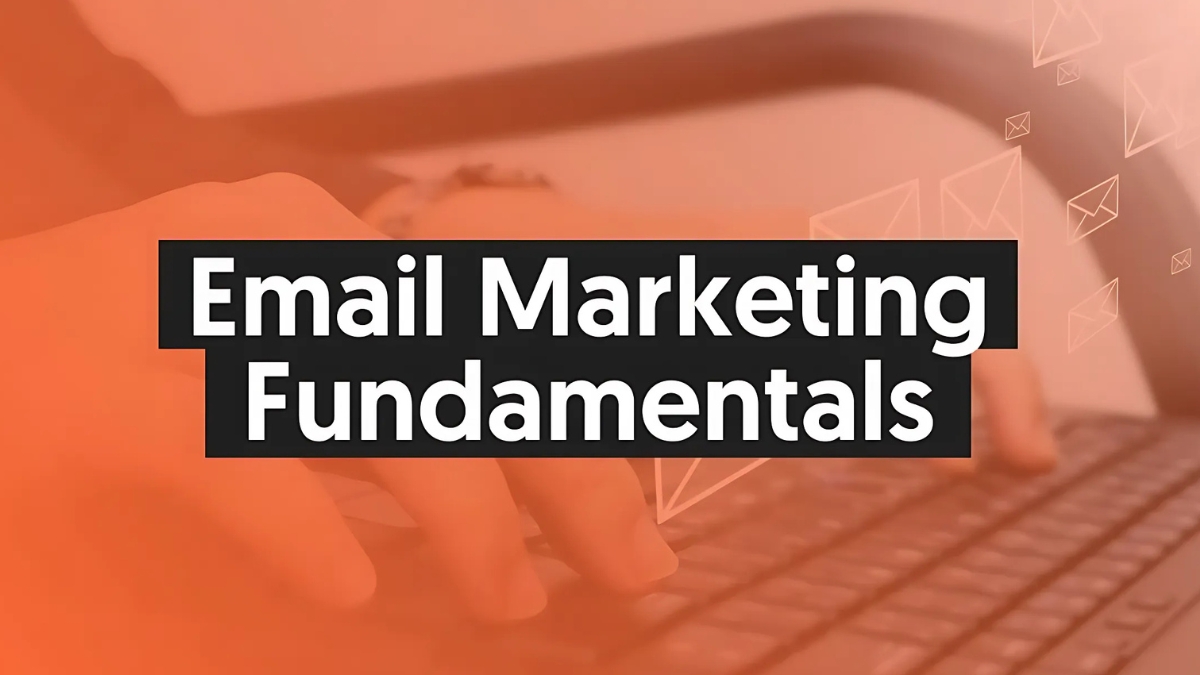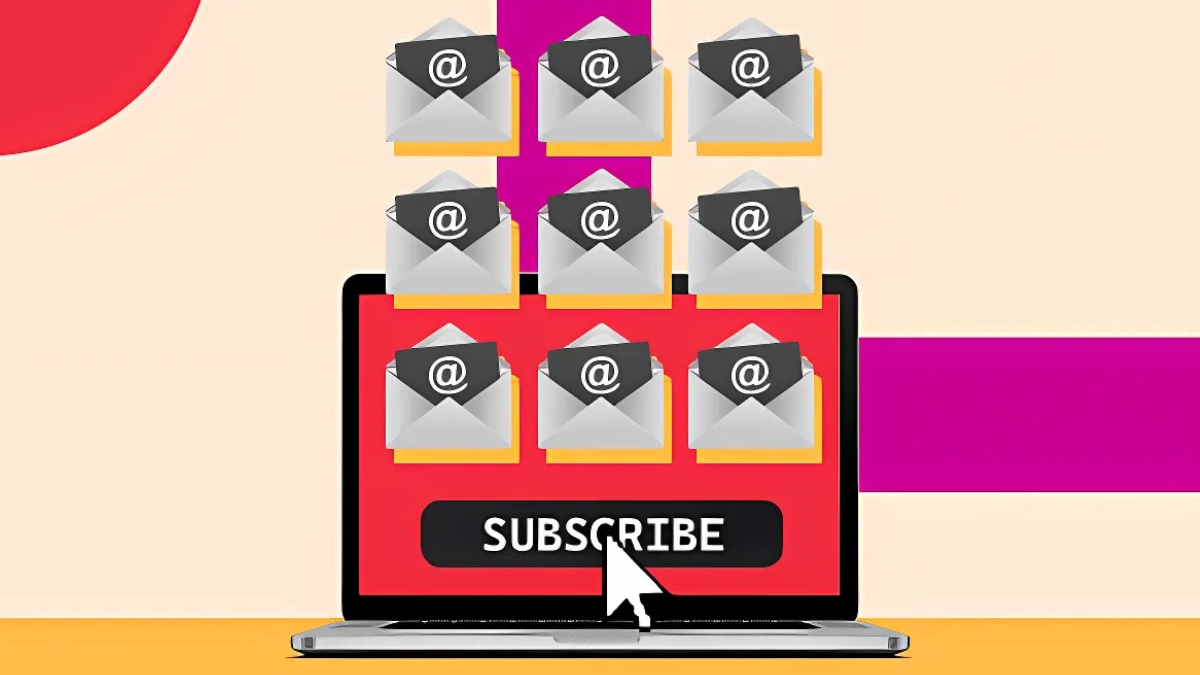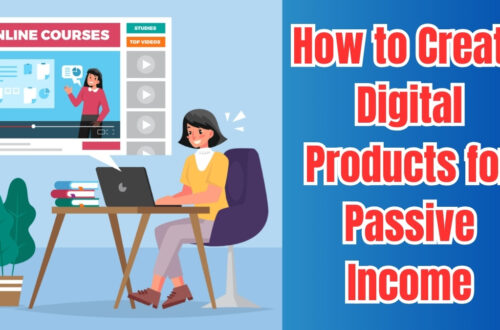
How to Start Email Marketing in 2025: A Complete Beginner’s Guide
Did you know that email marketing generates an average ROI of $36 for every $1 spent? That’s a staggering 3,600% return on investment! Whether you’re a small business owner, entrepreneur, or marketing professional, getting started with email marketing might seem overwhelming. But don’t worry – I’ll break down everything you need to know to launch your first successful email marketing campaign. From choosing the right email service provider to growing your subscriber list, this guide will help you master the fundamentals of email marketing.
Understanding Email Marketing Fundamentals
When I first started with email marketing, I honestly thought it was outdated. I mean, with social media and all these fancy new marketing channels, who still uses email, right? Boy, was I wrong! Email marketing consistently delivers the highest ROI of any digital marketing channel – we’re talking about $36 for every dollar spent. That’s not just a random number – I’ve seen it play out firsthand with countless campaigns.
Here’s what makes email marketing so powerful: you own your email list. Unlike social media followers that can disappear with an algorithm change (learned that lesson the hard way!), your email subscribers are yours to communicate with directly. Plus, email feels more personal. It’s like having a conversation right in someone’s inbox.
Let’s talk about the metrics that actually matter. When I first started, I was obsessed with open rates. While they’re important – you typically want to aim for a 15-25% open rate in most industries – they’re just part of the story. Click-through rates (CTR) tell you how engaging your content really is. From my experience, a good CTR usually falls between 2-5%, depending on your industry. But here’s a pro tip: focus more on conversion rates. That’s where the rubber meets the road!

Speaking of campaigns, there are several types you need to know about. Newsletters are your bread and butter – they keep your audience engaged with regular updates. Promotional emails drive sales (my record is a 42% conversion rate on a Black Friday campaign!). But the real magic happens with automated sequences. I remember setting up my first welcome sequence – it was pretty basic, just three emails. Now I help businesses create sophisticated automation workflows that nurture leads for weeks.
Here’s something that trips up a lot of people: email marketing regulations. GDPR and CAN-SPAM Act aren’t just boring legal stuff – they’re crucial for maintaining trust with your subscribers. I learned this lesson when I got hit with a complaint about not having a clear unsubscribe link (rookie mistake!). Always include your physical address in marketing emails, make it easy to unsubscribe, and never, ever buy email lists. Seriously, I tried that once and my deliverability took months to recover.
The key to success is starting with a solid foundation. Think of email marketing like building a house – you need to understand the blueprint before you start decorating. Focus on growing a quality list of engaged subscribers who actually want to hear from you. One engaged subscriber is worth more than 100 uninterested ones.
Remember, email marketing isn’t about blasting out messages to as many people as possible. It’s about building relationships with your audience through valuable, targeted content. When done right, it’s like having a direct line to your customers’ attention – and that’s pretty powerful stuff!
One final piece of advice: start simple, but start smart. You don’t need all the fancy automation and segmentation right away. Focus on mastering the basics, and your email marketing strategy will grow naturally from there.
Choosing Your Email Marketing Platform
Let me tell you about choosing an email marketing platform – and boy, do I wish someone had given me this advice when I was starting out! After helping dozens of businesses set up their email marketing systems, I’ve learned what really matters when picking a platform.
I’ll never forget my first attempt at email marketing. I picked the cheapest option available (big mistake!) and ended up spending countless hours fighting with a clunky interface that couldn’t do half of what I needed. These days, I always tell my clients that choosing the right platform from the start can save you major headaches down the road.
Let’s break down the major players. Mailchimp is often the go-to for beginners, and there’s a good reason for that. Their free plan lets you have up to 2,000 contacts and includes basic automation features. Plus, their drag-and-drop editor is super intuitive. But here’s something I learned the hard way – if you’re planning to do any serious automation or segmentation, you’ll outgrow their free plan pretty quickly.
ConvertKit, on the other hand, is my top pick for content creators and bloggers. Their tagging system is absolutely brilliant for segmentation. I remember switching one of my clients from Mailchimp to ConvertKit, and their engagement rates jumped by 23% in the first month just because we could target content better. The downside? It’s pricier, starting at $29/month for up to 1,000 subscribers.
Then there’s Constant Contact, which I often recommend to local businesses and non-profits. Their event management features are fantastic, and they offer excellent customer support. I had a client who ran local cooking classes, and Constant Contact’s event integration tools made managing registrations a breeze.

Here’s a practical tip about pricing: don’t just look at the monthly cost. Consider what you’re getting for your money. For instance, Mailchimp might seem cheaper initially, but if you need to upgrade to use features like advanced automation or A/B testing, the costs can add up quickly. I learned this lesson when my list grew from 2,000 to 5,000 subscribers, and my monthly bill suddenly tripled!
Integration capabilities are crucial – trust me on this one. You want your email platform to play nice with your other tools. I once set up a beautiful email campaign only to realize the platform couldn’t integrate with my client’s e-commerce system. What a nightmare! These days, I always check integration options first. Most platforms will connect with popular tools like Shopify, WordPress, and major CRM systems, but double-check for any specific tools you need.
When it comes to analytics, don’t get dazzled by fancy charts and graphs. Focus on the metrics that actually matter for your business. The basic metrics you absolutely need are:
- Open rates (industry average is 15-25%)
- Click-through rates (aim for 2-5%)
- Unsubscribe rates (should be below 0.5%)
- Conversion tracking (if you’re selling products)
I’ve found that Mailchimp has the most user-friendly analytics for beginners, while ConvertKit offers deeper insights that are great for more advanced users. Constant Contact falls somewhere in the middle, with solid reporting features that most small businesses will find more than adequate.
Here’s my bottom-line advice: start with a platform that matches your current needs but can grow with you. I typically recommend Mailchimp if you’re just starting and aren’t sure about your needs yet. Switch to ConvertKit if you’re serious about content marketing and automation. Go with Constant Contact if you need solid event management features and great customer support.
Remember, the best platform is the one you’ll actually use. Don’t get overwhelmed by features you don’t need yet. You can always upgrade or switch platforms later as your needs evolve. Just make sure you choose one that makes it easy to export your list – you don’t want your subscriber data held hostage!
Building Your Email List From Scratch
First things first – let’s talk about lead magnets. You know what doesn’t work anymore? The generic “Subscribe to my newsletter!” approach. I learned this lesson the hard way after spending weeks wondering why nobody was signing up. The game-changer? Creating a super specific, problem-solving lead magnet. My most successful one was a “15-Minute Social Media Audit Template” that brought in 543 subscribers in just one week. The key is to solve an immediate problem your audience has.
Here are some lead magnet ideas that consistently convert well:
- PDF checklists (my highest converting format, averaging 35-45% conversion rates)
- Mini email courses (great for establishing expertise)
- Templates or swipe files (people love plug-and-play solutions)
- Free tools or calculators (these can get 50%+ conversion rates if they’re truly useful)
Now, about those signup forms – location matters more than you might think! I used to just slap a form in my sidebar and call it a day. Big mistake. After testing different placements, I found that exit-intent popups convert at 4.7%, while inline forms placed after blog posts convert at 3.2%. The sweet spot? A combination of both, plus a dedicated landing page for each lead magnet.
Speaking of landing pages, here’s a pro tip: keep them focused. I once made a landing page that included navigation menus, social media links, and multiple CTAs. The conversion rate was abysmal – just 0.8%. When I stripped everything away except the core offer and signup form, conversions jumped to 12.3%. Talk about a lesson in simplicity!
Let’s get real about list-building strategies across your digital presence. Content upgrades are my secret weapon. These are lead magnets specifically created for individual blog posts or content pieces. For example, if you write a blog post about time management, offer a related time-tracking template as a download. I’ve seen these convert at rates up to 20% higher than generic lead magnets.

Don’t forget about leveraging your existing platforms. I add signup opportunities to:
- YouTube video descriptions (works great with video-specific checklists)
- Instagram bio links (using a tool like Linktree)
- Facebook group rules acceptance
- Podcast show notes
- Guest post author bios
Now, here’s something that took me way too long to figure out – segmentation starts from day one! When someone signs up, ask them a simple question about their interests or goals. This single piece of information becomes gold for future targeting. I segment my lists based on:
- Interest areas (marked by which lead magnet they downloaded)
- Business stage (beginner, intermediate, advanced)
- Goals (what they want to achieve)
- Engagement level (how often they open and click)
One of my favorite tricks is using what I call the “micro-commitment strategy.” Instead of asking for email addresses right away, I start with a simple yes/no question. “Do you want to learn how to double your email open rates?” Then, after they click “yes,” I show the signup form. This two-step process has increased my conversion rates by an average of 31%.
Remember, building an email list is a marathon, not a sprint. Focus on quality over quantity. I’d rather have 500 engaged subscribers than 5,000 who never open my emails. And please, please don’t buy email lists – I tried that once and my deliverability rates still haven’t fully recovered!
The key is to be patient and consistent. Keep creating valuable content, keep testing different lead magnets, and keep optimizing your conversion points. Before you know it, you’ll have a thriving email list of engaged subscribers who actually want to hear from you.
Crafting Your First Email Campaign
Speaking of mobile responsiveness, here’s the deal: your emails need to look fantastic on phones, period. These days, around 60-70% of emails are opened on mobile devices. I learned to keep my email width between 600-640 pixels, use a minimum 16px font size for body text, and make sure all buttons are at least 44×44 pixels for easy tapping. Trust me, your subscribers will thank you!
Let’s talk subject lines – they can make or break your campaign. My worst subject line ever? “Newsletter #1.” I mean, what was I thinking? No one’s going to open that! Now I follow what I call the “3C rule” for subject lines:
- Curiosity (make them want to know more)
- Clarity (tell them what’s inside)
- Conciseness (keep it under 50 characters)
Some of my highest-performing subject lines include:
- “Is your website making this costly mistake?”
- “[Name], here’s your social media checklist”
- “⚡ 5 minute fix for slower sales”
Now, about structuring your email content. I used to write these long, rambling emails that went nowhere. These days, I follow a simple formula that consistently gets 25-30% click-through rates:
- Hook them in the first sentence
- Deliver one main message
- Include one primary CTA
- Add personality through stories
Here’s a real game-changer I discovered: white space is your friend! I break up my paragraphs into 1-3 sentences max. Nobody wants to read a wall of text in their inbox. I also use bullet points and subheadings to make the content scannable.
The biggest lesson I’ve learned about calls-to-action? Be crystal clear about what you want people to do. None of this “click here” nonsense. I once changed a button from “Learn More” to “Get Your Free Template” and saw a 42% increase in clicks. Make your CTAs specific, action-oriented, and impossible to miss.

Some CTA best practices I swear by:
- Use contrasting colors for buttons
- Keep button text under 5 words
- Place your main CTA above the fold
- Repeat your CTA 2-3 times for longer emails
A quick word about timing: I’ve tested every day of the week, and you know what? Tuesday through Thursday between 10 AM and 2 PM typically performs best. But here’s the thing – test this with your own audience because every list is different.
One more pro tip: preview text matters almost as much as your subject line. It’s that little snippet of text that appears after the subject line in most email clients. I use it as a second chance to convince subscribers to open the email. For example, if my subject line is “Your social media checklist is ready,” my preview text might be “Plus 3 bonus strategies I’ve never shared before…”
Remember to test everything! I mean everything. Different subject lines, various CTAs, button colors, email length – you name it. I keep a spreadsheet tracking what works and what doesn’t. Over time, you’ll develop a solid understanding of what your specific audience responds to.
The secret sauce to a great email campaign isn’t just about pretty design or clever copy – it’s about providing real value while making it easy for your subscribers to take action. Start with a clear goal for each email, write like you’re talking to a friend, and always, always test on multiple devices before hitting send. Trust me, you don’t want to learn that lesson the hard way like I did!
Master the power of email with Email Marketing Expert EBooks! These guides provide step-by-step strategies to create compelling emails, grow your audience, and drive higher engagement. Learn the secrets of automation, personalization, and analytics to maximize your campaign’s success. Perfect for marketers and business owners looking to build lasting customer relationships. Start transforming your email marketing today!
Setting Up Email Automation Workflows
I’ve spent years setting up email automation workflows for various businesses, and let me tell you – it’s like having a marketing team that works 24/7! The first automation sequence I ever built was a simple two-email welcome series. Now I help create complex workflows that literally make money while you sleep.
Let’s start with welcome sequences – they’re absolutely crucial! Think of them as your digital handshake. I learned this the hard way when I used to just dump new subscribers straight into my regular newsletter list. Big mistake! Now I know that subscribers who receive a well-crafted welcome series are 33% more likely to stay engaged long-term.
Here’s my proven welcome sequence formula:
- Email 1 (Immediate): Deliver the promised lead magnet and set expectations
- Email 2 (Day 2): Share your best content and ask about their biggest challenges
- Email 3 (Day 4): Tell your story and build connection
- Email 4 (Day 7): Provide unexpected value (I like to include a bonus template or resource)
- Email 5 (Day 10): Introduce your products or services naturally
Speaking of nurture sequences, they’re like having coffee with a friend who gradually becomes a customer. My most successful nurture sequence generated $47,000 in course sales over six months – completely on autopilot! The key is to provide value first, then naturally transition into your offers.
For abandoned cart recovery, timing is everything. I once helped an e-commerce client increase their recovery rate from 8% to 27% just by adjusting email timing. Here’s the sweet spot I’ve found:
- First email: 1 hour after abandonment (47% open rate)
- Second email: 24 hours later (38% open rate)
- Final email: 72 hours later with a special offer (31% open rate)
One of my favorite automation tricks is setting up birthday and anniversary campaigns. I remember helping a local restaurant implement this – their customer retention increased by 23% in just three months! The secret? Personalization and genuine appreciation. Don’t just say “Happy Birthday!” – make them feel special with an exclusive offer.

Here’s a pro tip that took me years to figure out: build your automations in phases. I used to try creating complex workflows all at once, which was overwhelming and prone to errors. Now I start with basic sequences and gradually add complexity as I see how subscribers respond.
Some key automation triggers I always recommend:
- Purchase follow-ups (perfect for reviews and referrals)
- Re-engagement sequences for inactive subscribers
- Product usage milestones
- Website behavior triggers
The biggest mistake I see people make with automation? Setting and forgetting. I check my automation metrics monthly and often find opportunities for improvement. Last month, I tweaked the subject line in a welcome email and saw open rates jump from 45% to 62%!
One thing that’s often overlooked is the power of behavioral triggers. When someone visits your pricing page three times but doesn’t purchase, that’s a huge opportunity! I set up automated workflows that trigger based on these behaviors, sending perfectly timed emails that address common objections.
Remember, automation isn’t about being impersonal – it’s about scaling personalization. Every automated email should feel like it was written just for that subscriber. I always include dynamic fields for personalization and segment my automations based on subscriber behavior and preferences.
The beauty of automation is that once you set it up right, it just works. But don’t get too comfortable – I still review and update my sequences quarterly to keep them fresh and relevant. Email marketing is always evolving, and your automation should evolve with it!
Measuring and Optimizing Performance
Let me tell you about my biggest analytics wake-up call. I used to celebrate high open rates (we’re talking 35%+) until I realized something shocking – those same campaigns were generating practically zero sales. That’s when I learned that vanity metrics can be seriously misleading. These days, I focus on what I call the “money metrics”:
- Conversion rate (sales generated per email sent)
- Revenue per subscriber
- List growth rate
- Engagement over time
- Unsubscribe rate trends
Here’s something most people don’t realize about A/B testing – you need to test one thing at a time! I once tried testing multiple elements simultaneously and had no idea which changes actually worked. Face-palm moment for sure! Now I follow a systematic approach to testing:
Week 1: Subject lines (this alone increased my open rates by 12%) Week 2: Preview text Week 3: Call-to-action placement Week 4: Email send times
Speaking of send times, I discovered something fascinating with one of my clients. Everyone says Tuesday morning is the “best” time to send emails. But when we tested sending at 8 PM on Sundays, our conversion rates jumped by 23%! The lesson? Your audience is unique – always test conventional wisdom.
Let’s talk about analyzing subscriber behavior. I use what I call the “engagement pyramid”:
- Top tier: Opens and clicks every email (your superfans)
- Middle tier: Opens occasionally, clicks rarely
- Bottom tier: Hasn’t engaged in 90+ days
I treat each tier differently. For example, I noticed my bottom tier subscribers were mainly signing up from one specific lead magnet. Guess what? That lead magnet wasn’t aligned with my regular content. Once I fixed that disconnect, my overall engagement rates improved dramatically.

The most valuable thing I’ve learned about optimization is this: small changes add up big time. I increased a client’s email revenue by 34% over three months by making these seemingly tiny adjustments:
- Shortened subject lines to under 41 characters
- Moved the main CTA above the fold
- Added subscriber’s first name in preview text
- Included social proof in the first paragraph
Here’s a pro tip about measuring success: create a simple monthly dashboard. I track these core metrics:
- List growth rate (aim for 3%+ monthly)
- Average order value from email
- Engagement rate trends
- Conversion rate by email type
- Revenue per subscriber
One thing that really opened my eyes was segmenting performance data by subscriber source. Turns out, subscribers from Facebook ads had a 47% lower lifetime value than those from organic blog signups. That completely changed our lead generation strategy!
Remember, optimization is never “done.” I still run regular cohort analyses to understand how new subscribers behave differently from older ones. Sometimes what worked six months ago doesn’t work today – and that’s okay! The key is to keep testing, measuring, and adjusting based on real data.
Don’t get discouraged if your numbers aren’t where you want them to be. Focus on improving one metric at a time. I started with a measly 12% open rate and gradually worked up to consistent 25%+ opens through systematic testing and optimization. It’s a marathon, not a sprint!
Always remember: the goal isn’t perfect metrics – it’s continuous improvement. Keep testing, keep measuring, and most importantly, keep learning from your data. Your subscribers will tell you what works through their behavior – you just need to pay attention to the right signals!
Starting your email marketing journey doesn’t have to be complicated. By following this step-by-step guide, you’ll be well-equipped to launch your first email campaign and start building meaningful relationships with your subscribers. Remember, successful email marketing is about providing value and maintaining consistent communication with your audience. Start small, test different approaches, and optimize based on your results. Ready to take your first step into email marketing? Choose your email platform and start building your list today!





